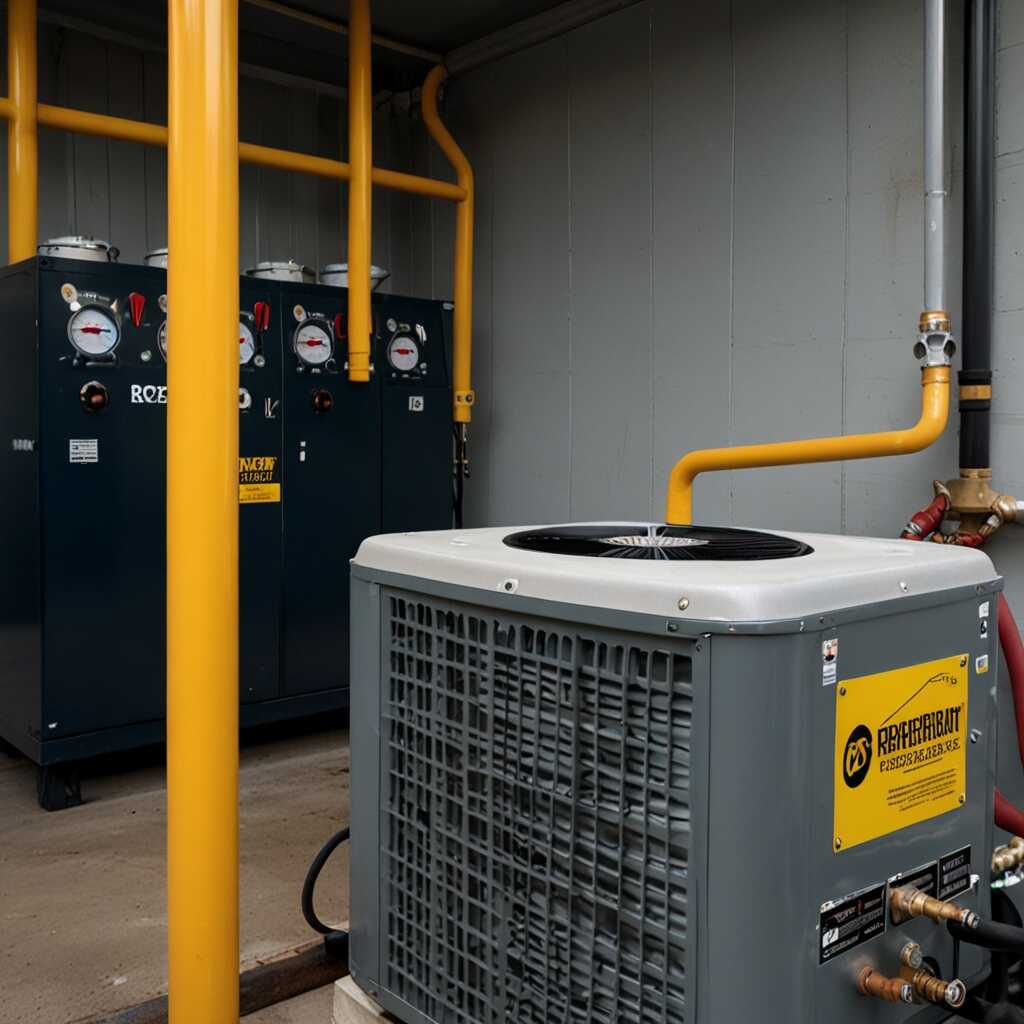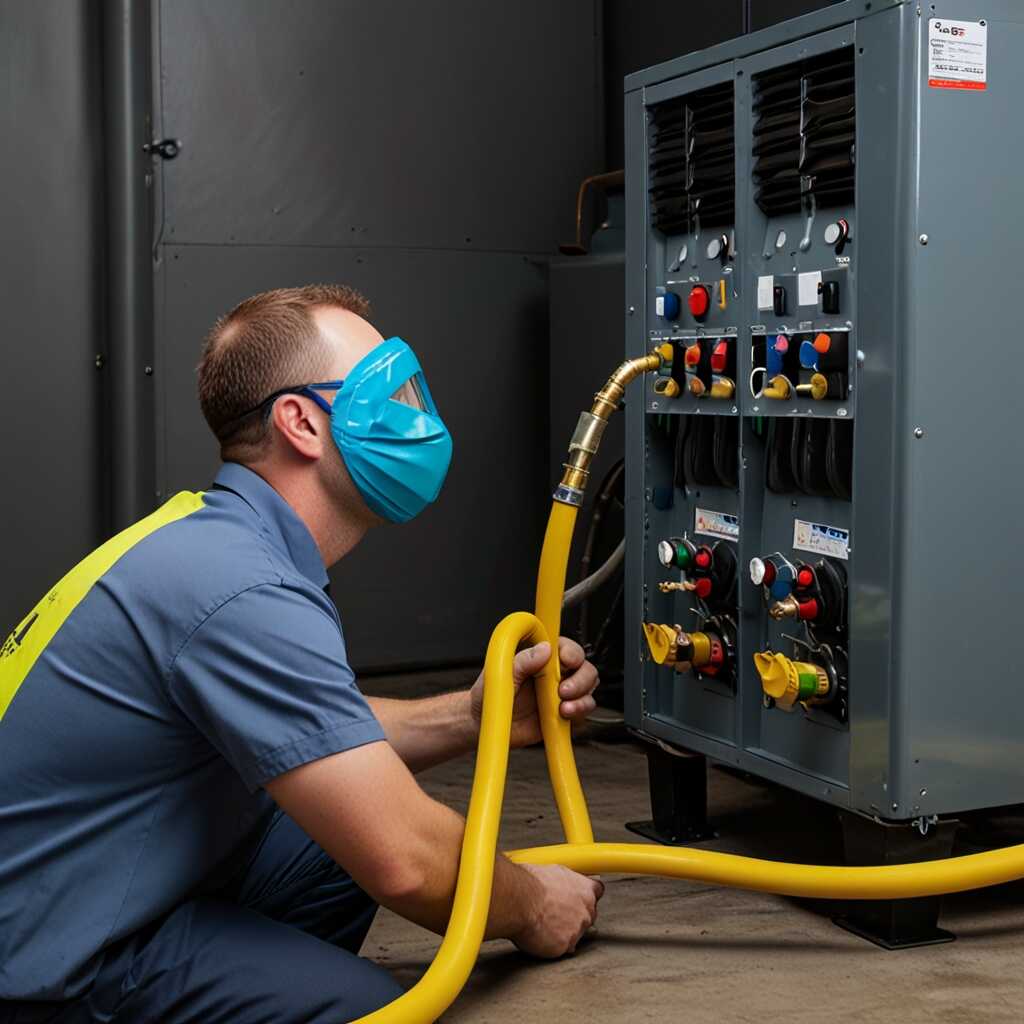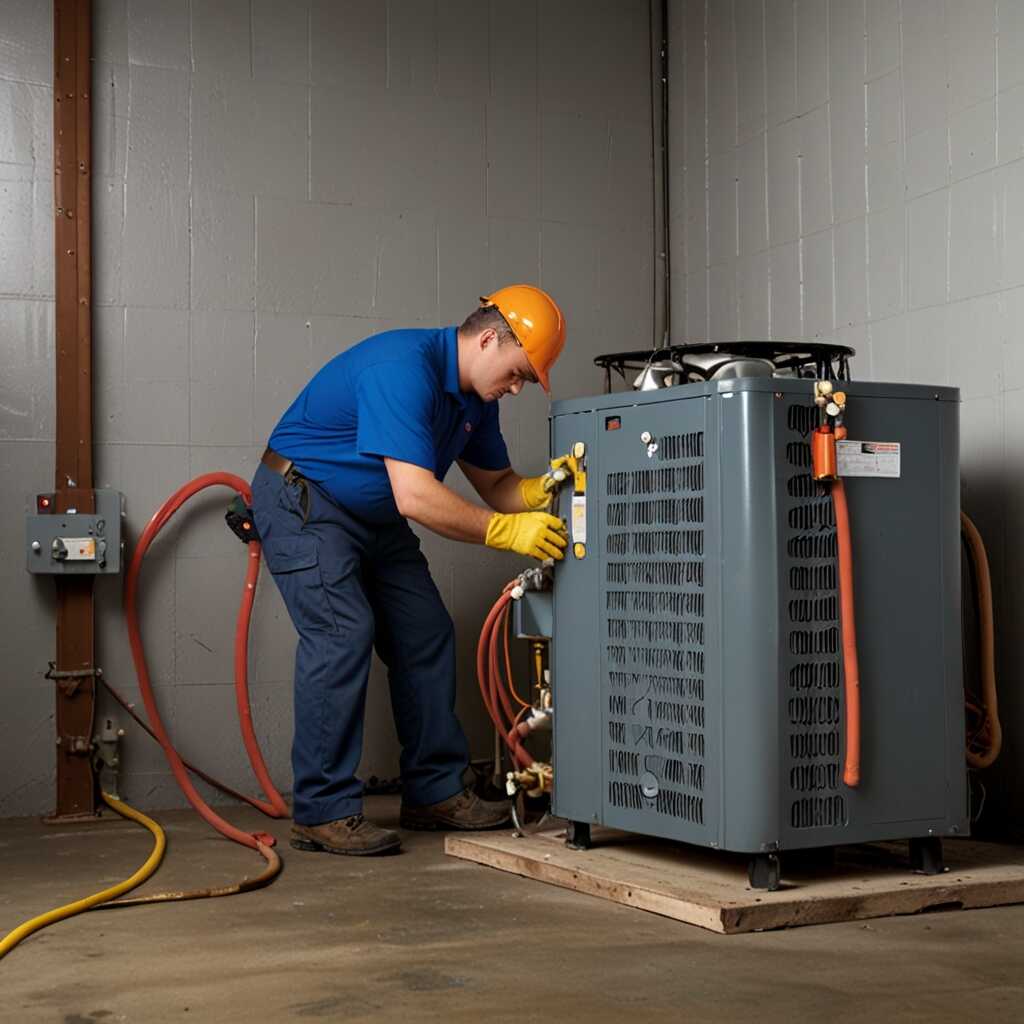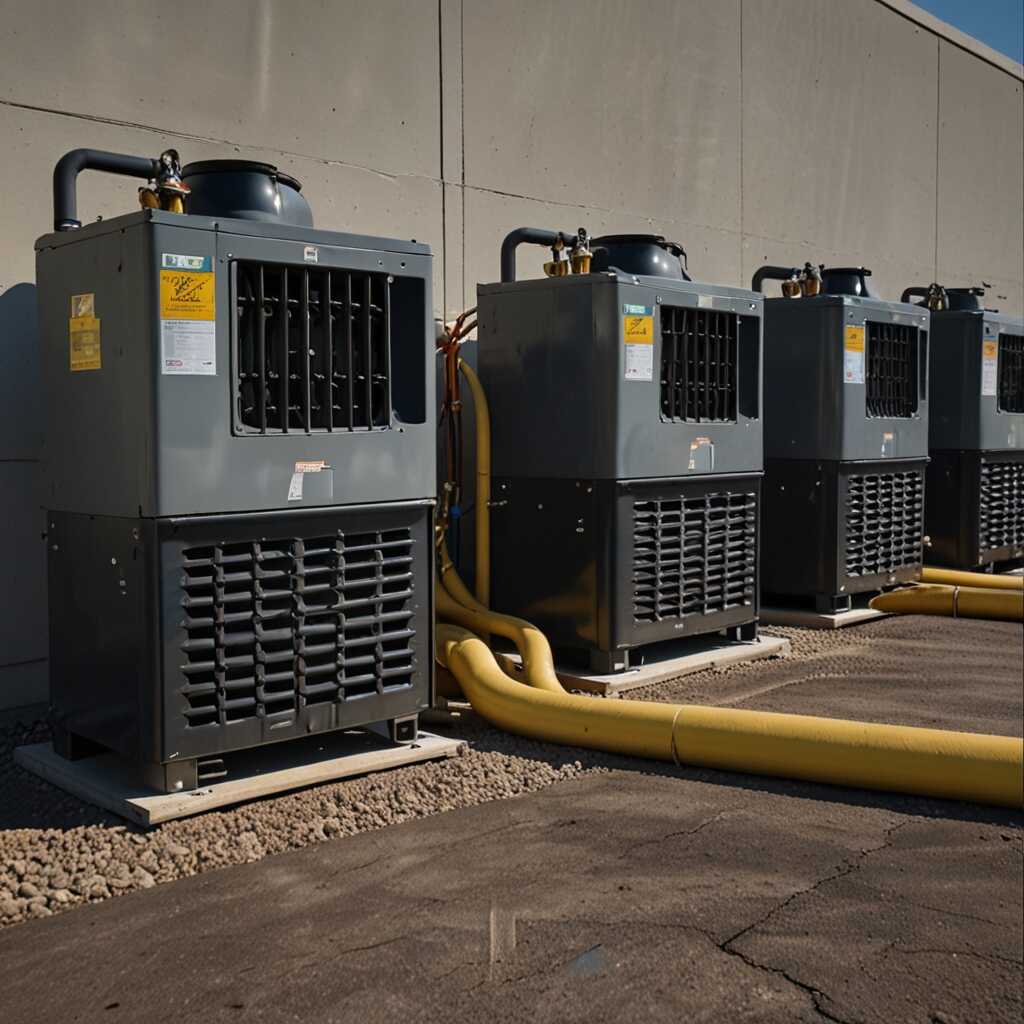Maximizing HVAC system life with filter drier monitoring is essential for enhancing performance and efficiency. This process ensures that refrigerant recovery machines work optimally, protecting the overall health of the HVAC system. By integrating robust filter drier monitoring practices, HVAC technicians can prevent costly repairs and extend system longevity. At Refrigerant Recovery Pro, we provide expert guidance on these techniques, delivering valuable insights to improve reliability and reduce operational costs.
What Are Refrigerant Recovery Machines and Their Uses
Refrigerant recovery machines are specialized devices designed to safely recover refrigerants from HVAC systems. Their primary functions include extracting refrigerant during repairs, preventing environmental contamination, and ensuring compliance with regulations. They enhance system performance by removing refrigerants efficiently and minimizing potential leaks. Typically, there are three main types of refrigerant recovery machines: passive, active, and high-pressure recovery machines, each tailored for specific HVAC applications. Understanding their essential functions helps HVAC technicians and business owners appreciate the value of these machines in maintaining reliable and efficient systems.
Key Features of Refrigerant Recovery Machines
Refrigerant recovery machines come equipped with several key features that enhance their performance. For instance, many machines are designed with high-efficiency compressors that quickly recover refrigerant, allowing HVAC technicians to complete jobs faster. Others include built-in filters that ensure only clean refrigerant is stored, thereby improving system reliability. These machines can handle various refrigerant types, making them versatile tools in the HVAC industry. Additionally, their durability and ease of use mean that technicians can operate them comfortably in various environments. Brands such as Refrigerant Recovery Pro offer expert guidance on selecting machines that include these features, enhancing the overall effectiveness of maintenance operations.
The Role of Filter Drier Monitoring in HVAC Efficiency
Filter drier monitoring plays a critical role in HVAC system longevity. It ensures proper refrigerant flow and removes moisture, which helps prevent corrosion and refrigerant contamination. When HVAC technicians utilize filter drier monitoring systems, they can effectively oversee the health of the refrigerant, thus improving reliability and performance. Key components of these systems include high-performance sensors and real-time data analysis capabilities. Regular monitoring can lead to increased efficiency, sometimes achieving improvements of up to 15% in specific conditions. This consistent data review allows for early detection of issues, enabling timely corrections that enhance overall system efficiency.
Key Components of Filter Drier Monitoring Systems
Effective filter drier monitoring systems typically include a combination of sensors, alarms, and diagnostic software. High-quality sensors detect impurities and moisture levels in the refrigerant. Alarms trigger alerts for technician intervention before serious issues arise. Diagnostic software analyzes data for trends over time, identifying potential problems ahead of failures. This systematic approach not only enhances refrigerant recovery processes but also fine-tunes overall HVAC operations. By relying on proven technologies, HVAC professionals can ensure they are not just maintaining, but actively enhancing their systems’ performance and longevity, leading to cost-effective solutions for their operations.

Advantages of Employing Monitored Recovery Machines
Using monitored refrigerant recovery machines with filter drier functionality offers several key advantages. These machines enhance reliability by ensuring that the refrigerant remains clean and free of contaminants. They provide real-time data to HVAC technicians, enabling better decision-making during maintenance and repairs. Filter drier monitoring can help reduce system failures, ensuring efficient HVAC operations. Additionally, these machines lead to significant cost savings. By maintaining optimal refrigerant conditions, businesses can prevent costly repairs and extend the lifespan of their HVAC systems.
Detailed Performance Comparison of Monitored Machines
Monitored recovery machines with filter drier functionality significantly outperform traditional systems. They are designed to provide immediate alerts for potential issues, such as moisture or particulate buildup. This allows HVAC technicians to address problems before they lead to larger issues. Research shows that HVAC systems using monitored machines can reduce failures by up to 30%. This not only enhances the overall performance but also lowers operational costs. Companies that invest in these advanced systems experience improved efficiency and increased customer satisfaction, as they can provide a higher quality of service.
Key Metrics for Effective System Maintenance
- Typical lifespan of an HVAC system is around 15-20 years with proper care.
- Filter drier monitoring devices can increase efficiency by up to 20%.
- Over 75% of HVAC system failures stem from poor refrigerant management.
- Regular filter replacements can extend system life by approximately 5 years.
- Costly repairs can amount to 30% of the total installation cost over the system’s life.
- Monitoring systems can catch issues early, reducing downtime by 40%.
- Systems with good maintenance save homeowners about $500 annually on energy costs.

Integrating Best Practices for Enhanced Monitoring
To integrate filter drier monitoring into HVAC systems, HVAC professionals must follow several best practices. Start by selecting reliable monitoring equipment designed specifically for refrigerant recovery. Regular testing and timely maintenance checks ensure the equipment functions effectively, which enhances operational efficiency. HVAC technicians should focus on reviewing filters regularly, replacing them as necessary, and maintaining the optimal performance of their systems. Consistent training on how to monitor equipment properly will improve the reliability of the refrigerant recovery machines.
Frequency of Filter Drier Monitoring Tests
The recommended frequency for testing filter drier monitoring equipment varies by system. Generally, conducting tests every three months is ideal to ensure high-quality performance. HVAC professionals should keep a close eye on the performance data collected from these tests, enabling them to identify any potential issues early on. Implementing a strict testing schedule minimizes the chance of refrigerant leaks and improves overall system reliability. When properly maintained, filter driers can significantly enhance the durability and longevity of HVAC systems.

Challenges Faced with Refrigerant Recovery Machines
HVAC technicians often encounter refrigerant recovery issues like low recovery rates, equipment failure, and incomplete recovery. Factors affecting efficiency include the machine’s design, brand, and model settings. To mitigate these operational challenges, technicians should regularly test the machine’s components for reliability and perform routine maintenance. They should also keep an eye on the pressure levels and ensure the hoses are intact. Following best practices helps improve the overall performance and longevity of the equipment.
Essential Troubleshooting Steps for Refrigerant Recovery Machines
Technicians must follow essential troubleshooting steps to enhance the efficiency of recovery units. Identifying and addressing common operational challenges quickly helps ensure that recovery machines perform at their best. Start by checking all connections and hoses for leaks. Verify the refrigerant type and confirm it aligns with machine specifications. Inspect the filters and driers for clogs that could reduce performance. These steps, combined with data from equipment reviews, can significantly enhance the reliability and efficiency of refrigerant recovery tasks.
Advantages of Effective Refrigerant Management
- Improved energy efficiency leads to lower utility bills for users.
- Using refrigerant recovery machines enhances system longevity.
- Enhanced air quality benefits occupants and promotes health.
- Decreased maintenance costs arise from fewer system breakdowns.
- Regular monitoring supports environmental compliance and reduces waste.
- Stronger system reliability leads to fewer emergency service calls.
- Maintaining proper refrigerant levels optimizes performance consistently.

Understanding Compliance and Environmental Impact
The key regulations around refrigerant recovery include EPA guidelines and international environmental treaties. These regulations dictate how HVAC professionals must handle refrigerants, emphasizing recovery, recycling, and proper disposal. The environmental implications of refrigerant leakage are significant, as these substances contribute to ozone depletion and global warming. Monitored systems simplify compliance by providing real-time data on refrigerant levels, ensuring technicians can act swiftly to prevent leaks. Estimates suggest that monitored systems can reduce refrigerant emissions by up to 50% by 2025, enhancing both compliance and environmental protection.
Benefits of Monitored Refrigerant Recovery Systems
Monitored refrigerant recovery systems offer substantial benefits, enhancing reliability and efficiency in HVAC operations. These systems continuously track refrigerant health and alert technicians to issues promptly. By simplifying compliance with refrigerant recovery regulations, they enable HVAC technicians to respond effectively. This proactive approach reduces emissions and environmental impact, contributing to a more sustainable industry. The data provided by these systems helps in making informed decisions about maintenance and performance, directly linking to higher operational quality and regulatory compliance.
Case Studies Highlighting Successful Implementations
This section showcases specific organizations that implemented monitored refrigerant recovery machines, such as Green HVAC Solutions and AirFlow Masters. Green HVAC Solutions reduced refrigerant loss by 40%, enhancing operational efficiency. AirFlow Masters improved their recovery rate by 30%, saving on material costs. These implementations helped establish more reliable systems and demonstrated the tangible benefits of using monitored recovery machines.
Real-World Applications of Monitored Recovery Machines
Many HVAC companies, like CoolTech Innovations and Reliable Refrigeration, have integrated monitored refrigerant recovery machines into their operations. These machines provide essential monitoring features that enhance the performance and reliability of HVAC systems. For instance, these companies reported that monitoring enabled them to perform tests that ensured maximum recovery efficiency. In contrast, traditional systems often depended on manual monitoring, which led to errors and inefficiencies. The integration of monitoring technology is crucial for modern businesses aiming for sustainability and cost-effectiveness in their refrigerant recovery practices.
Target Users for HVAC Efficiency Practices
- HVAC technicians benefit from enhanced troubleshooting techniques.
- Business owners save money through improved operational efficiency.
- Maintenance managers can ensure reliable equipment performance.
- Refrigerant recovery specialists focus on eco-friendly practices.
- New businesses require effective methods for compliance and cost management.
- Environmental officers seek solutions to lower emissions and waste.
- Property managers appreciate consistent climate control and satisfied tenants.
Future Innovations in Refrigerant Recovery Technologies
Anticipated advancements in refrigerant recovery technologies focus on integrating innovative monitoring features, enhancing HVAC system efficiency, and improving reliability. Companies like Refrigerant Recovery Pro are at the forefront, providing essential insights into future trends in the industry. Innovative monitoring features can track refrigerant levels and optimize recovery processes, ensuring precise operation. This integration enables HVAC technicians to maintain equipment effectively, minimizing downtime and improving overall system performance. By preparing for these advancements, professionals can adapt to changes in regulatory demands and consumer expectations.
Leading Companies in Refrigerant Recovery Innovation
Leading companies, including Refrigerant Recovery Pro, continue to design refrigerant recovery machines with advanced monitoring capabilities. These features help HVAC technicians by providing real-time data and enhancing performance. The machines often come equipped with smart diagnostics, which improve reliability and reduce operational costs. As the market evolves, ongoing research enables these innovations to meet industry standards efficiently. These developments offer HVAC professionals tools that simplify compliance with regulatory requirements while ensuring effective refrigerant management.